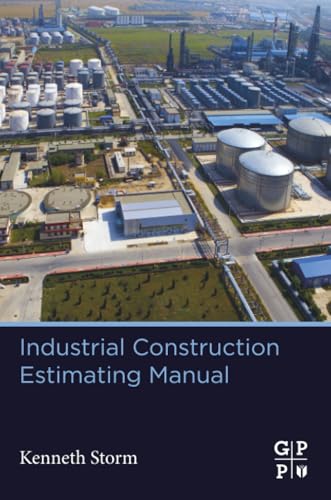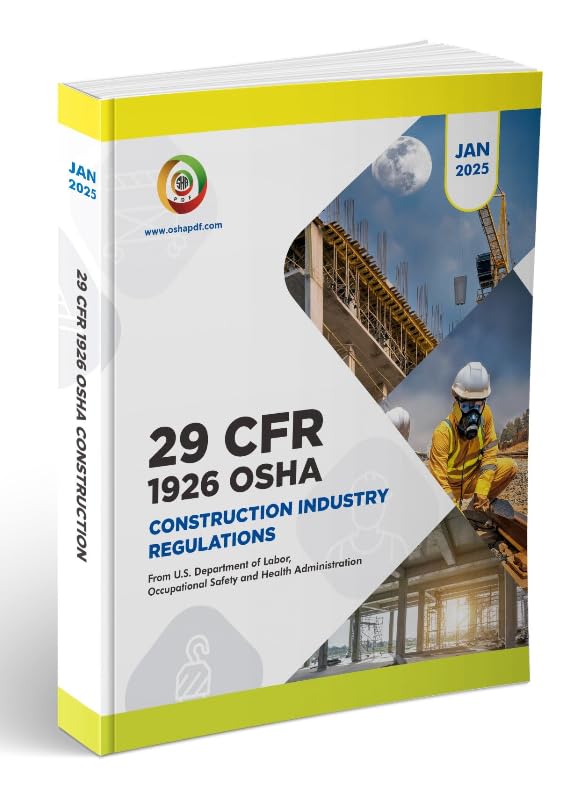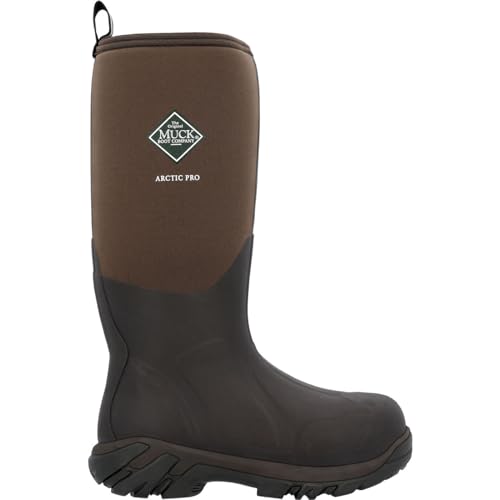For years, my workday footwear has been a source of constant, low-grade misery. I’ve logged countless hours on concrete floors, navigated debris-strewn construction sites, and climbed more ladders than I care to remember. Each day started with the same ritual: lacing up a pair of heavy, stiff, and unforgiving work boots that felt more like concrete blocks than shoes. By midday, my feet would be aching, and by the end of the shift, they’d be screaming for release. The problem is a universal one for anyone in the trades or industrial settings: you need uncompromising protection, but that safety often comes at the steep price of comfort, mobility, and frankly, style. The dream has always been to find a shoe that offers the certified protection of a work boot with the lightweight comfort and feel of an everyday sneaker. That very dream is what led us to the SKOKOD Steel Toe Work Shoes, a product that promises to blend indestructibility with athletic agility.
- 【Indestructible Shoes With Steel Toe Cap】The safety work shoes have steel toe, perfect for...
- 【Arch Support and Puncture Proof】Comfortable and soft insole supports your arch, and the midsole...
What to Demand from Your Next Pair of Safety Footwear
A piece of industrial and construction footwear is more than just an item; it’s a key solution for personal protection and all-day endurance. In hazardous environments, the right shoe is the first line of defense against crushed toes, puncture wounds from sharp objects like nails, and slips on slick surfaces. The primary benefit is, of course, safety. A certified steel or composite toe can mean the difference between a minor incident and a life-altering injury. But beyond that, modern work shoes aim to solve the secondary problem of fatigue. By incorporating lighter materials, better cushioning, and more ergonomic designs, they help reduce the strain on your feet, knees, and back, which is crucial for productivity and long-term health.
The ideal customer for this type of product is someone facing long hours on their feet in environments where impact and puncture risks are present but where the bulk of a traditional, heavy-duty boot is overkill. Think warehouse workers, delivery drivers, gig workers, auto mechanics, and those in light manufacturing or construction. They value mobility and need a shoe that can keep up with a fast pace. Conversely, this style of safety sneaker might not be suitable for those who work in extreme conditions, such as heavy-duty framers, loggers, or workers in deep mud or snow who require full waterproofing, robust ankle support, and maximum insulation. For those individuals, a traditional high-ankled, waterproof work boot is a more appropriate choice.
Before investing, consider these crucial points in detail:
- Protection vs. Weight: The core function of a safety shoe is protection. This is typically achieved with a steel or composite toe cap and a puncture-resistant plate in the sole (often made of steel or Kevlar). Historically, this meant a very heavy shoe. The key innovation in models like the SKOKOD is the attempt to provide this protection in a package that doesn’t feel like you’re wearing weights on your feet. When evaluating, ask yourself if the weight savings compromises the structural integrity needed for your specific job site.
- Comfort & Support: Performance on the job is directly tied to comfort. A shoe’s insole, midsole design, and arch support are critical. Many budget-friendly safety shoes cut corners here, resulting in a flat, unsupportive footbed that causes fatigue. Look for features like cushioned insoles (and check if they are removable for replacement), shock-absorbing heels, and a design that properly supports your foot’s natural arch. A breathable upper material is also vital for preventing sweat and discomfort during long shifts.
- Materials & Durability: The longevity of a work shoe depends entirely on its construction. The upper should be made of a material that can resist abrasion and scuffs; a breathable fabric mesh is great for comfort but may wear out faster than leather if you’re frequently kneeling or kicking materials. The outsole material, typically rubber, should provide excellent grip, and the tread pattern should be appropriate for the surfaces you’ll be on. Pay attention to stitching and how the sole is bonded to the upper, as these are common points of failure.
- Fit & Sizing: This is arguably the most critical and often overlooked factor. A poorly fitting safety shoe isn’t just uncomfortable; it’s a safety hazard. Your toes should not be cramped in the safety toe box, and your heel should not slip excessively. Be aware that sizing can be notoriously inconsistent between brands, and as we discovered, even within a single brand’s fulfillment process. Always check sizing guides and user feedback, and be prepared for the possibility of needing to exchange for a different size to get the perfect fit.
While the SKOKOD Steel Toe Work Shoes is an excellent choice for a specific user, it’s always wise to see how it stacks up against the competition. For a broader look at all the top models, especially for more demanding roles, we highly recommend checking out our complete, in-depth guide:
First Impressions: A Sneaker with a Secret Identity
The arrival of the SKOKOD Steel Toe Work Shoes was unconventional. The shoes came simply wrapped in plastic, with no box to speak of—a clear cost-saving measure that immediately sets expectations. However, once unwrapped, the shoes themselves made a strong visual impression. The Grey Size 12 Wide model we tested looked less like a piece of personal protective equipment and more like a modern athletic trainer or a stylish hiking shoe. The grey fabric upper is accented with a double 3D matte TPU design and subtle reflective striping near the laces, which adds a touch of visibility and flair. Picking them up, the first thing we noticed was the weight. While heavier than a standard running shoe (our size 12 came in around 22 oz per shoe), they felt significantly lighter than any traditional steel-toed boot we’ve handled. The flexibility was also surprising; the sole could be bent by hand, promising a much more natural stride. The interior felt adequately padded at first touch, though the insole was noticeably flat, hinting at the support concerns some users have raised. It felt like a sneaker hiding a powerful secret, and we were eager to see if its performance could live up to its protective claims. You can see the full range of colors and designs currently available.
What We Like
- Remarkably lightweight and comfortable for a steel-toed shoe
- Modern, athletic sneaker design is stylish and discreet
- Breathable fabric upper keeps feet cool during long workdays
- Flexible sole allows for a natural range of motion
Drawbacks
- Stock insole offers minimal arch support
- Sizing can be inconsistent and fulfillment issues were noted by users
- Upper material may lack long-term durability for high-abrasion tasks
Putting the SKOKOD Steel Toe Work Shoes to the Test
A work shoe’s true worth is only revealed under pressure. It’s not about how it looks out of the plastic, but how it feels after ten hours on your feet, how it protects you when a tool slips, and how it holds up after weeks of daily abuse. We put the SKOKOD Steel Toe Work Shoes through a comprehensive testing regimen, focusing on the core pillars of comfort, protection, and real-world durability to see if this sneaker-boot hybrid could truly deliver on its promises.
The Comfort Conundrum: All-Day Wearability vs. Foundational Support
The single most praised attribute of the SKOKOD Steel Toe Work Shoes, both in our testing and across user experiences, is its out-of-the-box comfort and lightweight nature. One user, who walks over 10 miles a day at their job, called them “ideal” and noted, “I forget that I have on steel toes at times.” We can wholeheartedly confirm this sentiment. The first few days of wearing these felt revolutionary. The flexibility of the rubber sole and the light, airy feel of the fabric upper make for an experience that is worlds away from the clunky, restrictive nature of traditional boots. The break-in period was virtually non-existent. We could walk, pivot, and climb stairs with an agility that felt like we were wearing regular sneakers.
However, this exceptional initial comfort hides a significant weakness: a fundamental lack of support. After a few long days on hard concrete, the flaw became apparent. The included insole is a simple, flat piece of foam that offers little to no arch support. This was echoed by a user who bluntly stated the shoes “feel like I am walking around in a cheap pair of flip flops at the dollar store” in terms of support. While the shoe itself is comfortable, the footbed is not. For those with flat feet, this might be manageable, as one reviewer pointed out. But for anyone with a medium to high arch, the lack of support will lead to foot fatigue and soreness by the end of the day. The good news is that the insoles are removable. We swapped them out for a pair of quality aftermarket orthotic insoles, and the transformation was immediate and profound. With proper support added, the SKOKOD shoes become a truly formidable all-day workhorse. We consider this an essential, almost mandatory upgrade for most users.
“Indestructible” Protection: Analyzing the Safety Features
The primary reason for buying a safety shoe is, of course, safety. The SKOKOD model advertises an “indestructible design,” centering on its protective steel toe cap and a puncture-proof midsole. We found these core safety features to be robust and reliable. The steel toe cap is solid and well-integrated into the shoe’s design. Tapping it yields a reassuring thud, and it provides ample room in the wide-size toe box, preventing the cramping or rubbing that can occur with poorly designed safety toes. One user noted that the steel toe “works fine, feels sturdy, and doesn’t cut into the top part of your foot that much,” a huge plus we can confirm. You feel confident that a dropped tool or a heavy box won’t cause serious injury.
Beneath the foot, the puncture-proof midsole, which the manufacturer states is Kevlar-lined, offers critical peace of mind on job sites where stray nails, screws, and other sharp debris are common hazards. While we didn’t intentionally try to drive a nail through the sole, its construction feels tough and resistant to threats from below. Where the “indestructible” claim falters is in the durability of the surrounding materials. Several users reported that the uppers, particularly around the toe, “wear out fast if you’re on your knees a lot.” Another simply said they were “not to strong on top.” Our assessment aligns with this. The breathable fabric upper, while excellent for comfort and ventilation, is not built for high-abrasion environments. For workers who frequently kneel, kick materials into place, or work in tight spaces where scuffing is inevitable, the fabric will likely fray and wear through much faster than traditional leather. The core safety elements are solid, but the sneaker-like shell is the weak link in the durability chain.
On the Ground: Grip, Traction, and Real-World Performance
Traction is a non-negotiable safety feature, and this is where we found the most contradictory feedback on the SKOKOD Steel Toe Work Shoes. Our own experience was mixed and highly dependent on the surface. The rubber sole features a multi-directional lug pattern that looks aggressive. On dry surfaces like concrete, asphalt, and wood, the grip was excellent. It felt secure and stable, providing confidence in every step. One user noted the grip was “very good, even on wet surfaces unlike some sneakers.”
However, another user had the exact opposite experience, stating they are “the worst in every type” of environment and that they “slid several times on wet smooth surfaces and gravel.” In our testing, we found the truth lies somewhere in the middle. On a smooth, wet tile floor, we did experience some minor slipping, suggesting the rubber compound may not be ideally formulated for that specific condition. Likewise, on very loose gravel, the lugs didn’t bite as deeply as those on a dedicated hiking boot might. Our conclusion is that for the majority of indoor and dry outdoor environments—like a warehouse floor or a typical construction site—the traction is more than adequate. But for workplaces with consistently slick floors (e.g., kitchens, some automotive shops) or extremely uneven, loose terrain, these might not be the most reliable choice. This is a critical factor to consider based on your specific work environment before you commit to purchasing these work shoes.
Fit, Finish, and the Sizing Saga
No feature analysis would be complete without addressing the most significant point of frustration for many buyers: sizing and fulfillment. One user recounted a harrowing tale of ordering five different pairs just to receive one in the correct size they originally requested. Others noted that the sizing runs large or loose. We ordered a Size 12 Wide, our standard size, and found it to be roomy. It wasn’t unwearably large, but it required lacing them up more snugly than a typical shoe to prevent heel slip, confirming the “looser side of fitment” observation from another reviewer. This inconsistency is a major gamble for online purchasers. Our advice is to potentially order a half-size down from your usual sneaker size, especially if you don’t have particularly wide feet, but be prepared for a possible return or exchange.
The overall fit and finish are decent for the price point but show signs of being a budget-oriented product. The mismatched reflective design mentioned by one user—one shoe reflecting rainbow colors and the other only purple and green—is a minor cosmetic quality control issue that speaks to mass production. The laces are thick and durable, like hiking boot laces, which is a nice touch. While the construction feels solid initially, the combination of a no-frills unboxing experience, potential cosmetic flaws, and the significant sizing lottery makes it clear that you are trading some of the polish and consistency of premium brands for an accessible price point.
What Other Users Are Saying
Synthesizing the broad spectrum of feedback, a clear picture of the SKOKOD Steel Toe Work Shoes emerges. The positive sentiment is overwhelmingly focused on comfort and weight. One user’s enthusiastic review captures this perfectly: “I honestly love these shoes. I walk easily about 10 miles a day at work and these are ideal for my job! They are very comfortable, lightweight and feel like normal shoes.” This is the core promise of the shoe, and for many, it delivers exceptionally well.
On the other hand, the negative feedback clusters around two major issues: support and sizing. The lack of arch support is a recurring theme, with one user’s comment that the shoes “lack support” and feel like “cheap flip flops” being a stark but useful data point for potential buyers with high arches. The most damning criticism, however, comes from the logistical nightmare of receiving the wrong size. A user who had to place three separate orders to finally get a pair that fit encapsulates a significant risk in the buying process. This feedback is critical because it highlights that while the shoe itself may be a good value, the path to getting a functional pair can be frustrating.
How Does the SKOKOD Compare? Three Key Alternatives
The SKOKOD Steel Toe Work Shoes carves out a specific niche, but it’s important to understand the landscape of safety footwear. Here’s how it stacks up against three different, popular alternatives.
1. Timberland PRO 6 Inch Steel Toe Insulated Waterproof Work Boot
- Anti-Fatigue Technology: A comfort system designed with shock-absorbing, geometrical technology that...
- Steel Safety Toe: Metallic, asymmetrical-shaped toe cap that meets US safety standards including...
The Timberland PRO is a classic for a reason. This is a traditional, heavy-duty work boot designed for the most demanding environments. Compared to the SKOKOD, it offers superior ankle support, full waterproofing, and insulation, making it the clear choice for outdoor work in harsh weather. Its leather construction is far more durable and resistant to abrasion. However, all these features come with significant trade-offs: the Timberland PRO is much heavier, stiffer, and requires a longer break-in period. Someone should choose this over the SKOKOD if their top priorities are maximum durability, ankle protection, and weather resistance, and they are willing to sacrifice the lightweight, sneaker-like agility that the SKOKOD provides.
2. Skechers Men’s Cankton Steel Toe EH Work Shoes
- WORKPLACE SAFETY CERTIFIED: Steel safety toe meets ASTM F2413 impact and compression standards for...
- ALL-DAY COMFORT DESIGN: Memory Foam cushioned insole and relaxed fit design provide the comfort...
The Skechers Cankton represents a middle ground between the SKOKOD’s athletic design and a traditional boot. It has the look of a sturdy hiking shoe and comes from a brand renowned for comfort. It offers a steel toe and Electrical Hazard (EH) safety ratings, often with better out-of-the-box arch support and memory foam insoles than the SKOKOD. While still heavier and less breathable than the fabric-based SKOKOD, it provides a more robust structure and the backing of a well-established footwear brand. A worker might prefer the Skechers Cankton if they want a step up in durability and support from the SKOKOD without committing to the weight and bulk of a full boot like the Timberland PRO.
3. MUCK Arctic Pro Insulated Boot
- 2mm Thermal foam under the footbed for extra warmth
- Comfort Topline
The MUCK Arctic Pro is a highly specialized tool for extreme conditions, and it highlights the SKOKOD’s intended use case by contrast. This is a tall, pull-on, fully waterproof, and heavily insulated boot designed for sub-zero temperatures, deep mud, and snow. It offers unparalleled protection from the elements but lacks a safety toe in this particular model (though other MUCK boots have them) and is not designed for agility on dry, flat surfaces. There is very little overlap in the ideal user for these two products. One would choose the MUCK boot for farming, outdoor work in winter, or any job where staying warm and dry is the absolute number one priority, whereas the SKOKOD is built for mobility and impact protection in milder, drier environments.
The Final Word: Who Should Buy the SKOKOD Steel Toe Work Shoes?
After extensive testing and analysis, our verdict on the SKOKOD Steel Toe Work Shoes is clear: it is a fantastic concept that is well-executed for a very specific user, with a few important caveats. If you are a worker who prioritizes lightweight comfort, breathability, and mobility above all else, and your job primarily involves walking on hard surfaces without extreme abrasion, this shoe is a game-changer. It successfully delivers on the promise of sneaker comfort with legitimate industrial protection.
However, we cannot recommend it without two strong pieces of advice. First, be prepared to invest in a quality pair of aftermarket insoles. This single upgrade transforms the shoe from a comfortable-but-unsupportive novelty into a genuine all-day work tool. Second, be cautious with sizing and patient with the ordering process. The potential for sizing issues is real. If you can navigate these hurdles, you will be rewarded with a safety shoe that lets you forget you’re even wearing one. For those in warehousing, logistics, light manufacturing, or any active job that demands protection without the weight, the SKOKOD offers a compelling and affordable alternative to the clunky boots of the past.







